The Northern Territory road trip between Darwin and Uluru is regarded as an essential Australian outback road trip experience. A diverse range of experiences are available along the route, ranging from the awesome spectacle of Uluru, thermal hot springs and amazing National Parks. This article details what to see and do on the road trip from Darwin to Katherine.
To make the most of the road trip you need to be prepared to take some side trips, however in the Northern Territory these will be limited for a 2WD vehicle. All of the options described in this article are accessible by 2WD vehicles such as cars and vans.
This article provides a detailed overview of the main Stuart Highway route and side trip options between Alice Springs and Uluru in the Northern Territory. The trip stages are detailed in:
- Awesome Australian 2WD Road Trips: Darwin to Katherine on the Stuart Highway
- Awesome Australian 2WD Road Trips: Katherine to Tennant Creek on the Stuart Highway
- Awesome Australian 2WD Road Trips: Tennant Creek to Alice Springs on the Stuart Highway
- Awesome Australian 2WD Road Trips: Alice Springs to Uluru (Ayers Rock) on the Stuart and Lasseter Highway
Join the Australia Travel Planning Facebook Group
Check out our Australia Travel Planning Facebook Group – you are welcome to join and it is a great resource to enable you to ask questions about your Australian trip!
Disclaimer: This article contains affiliate links. If you book after clicking on one of these links then we may receive a small commission at no extra cost to you.
Stuart Highway Route Overview, Northern Territory Australia
The major route between Darwin and Uluru in the Northern Territory is the Stuart Highway which can be travelled direct in 25 hrs over the 1964 km, 1221 mi distance.
The Stuart Highway consists of mostly single carriageway roads with a 130 km/hr (80 mi/hr) speed limit outside of the towns along the way in accordance with the signage. Be aware that the route is used by road trains which are trucks which haul multiple large trailers. Therefore be very careful overtaking, and it is worthwhile to ensure you have a more powerful engine in your car to reduce your overtaking time past the road trains. The Northern Territory is not a good place to have a gutless vehicle.
The route also has large expanses of unpopulated roads between towns, so ensure you pack extra water and food in your vehicle and also pack a first aid kit. For more information about preparing for your trip see 5 Top Tips to Prepare Your Car for a Big Road Trip.
Around Darwin
Darwin History
Darwin is a small tropical Australian city which has a rich history, and is the only city in the sparsely populated Northern Territory. Darwin was originally founded in 1869 as a trading outpost beside the expansive west facing harbour, but quickly grew when gold was discovered 200km south in 1871.
Since then two major events have shaped the history of Darwin. The first was Darwin being the location of the first enemy attack on Australia during World War Two. Between February 1942 and October 1943 the Japanese conducted over 60 air raids over Darwin and surrounding areas, with consequent loss of life and property. As a result Darwin’s military history is a major feature for any visit to Darwin.
The second event was Cyclone Tracy which flattened the city on Christmas Day in 1974. In one of the biggest airlift activities in Australia’s history more than 30,000 people were subsequently evacuated from Darwin from a then population of 43,000 people.
Darwin has since rebuilt to its current multi-cultural population of almost 130,000 people.
Key Darwin Attractions
Key Darwin Attractions include:
- The Mindil Beach Sunset Markets which operate from April to October on Thursday evenings and Sunday day and evening. The Mindil Beach tropical markets are renowned for their Asian inspired multi-cultural food bonanza, local artisans and live entertainment.
- The Parap Markets operate every Saturday all year round across the lunch period. The Nightcliff Markets operate every Sunday morning through to mid afternoon. Both markets provide fresh produce, a multi-cultural dining experience, local artisans and live entertainment.
- The Aquascene experience where you can hand feed hundreds of fish daily at high tide.
- Darwin’s military history can be explored at:
- The Defence of Darwin Experience was opened in 2012 to commemorate the 70th anniversary of the bombing of Darwin in World War II. It is part of the Darwin Military Museum. The Defence of Darwin Experience also provides information on the other significant military sites around Darwin.
- The World War II Oil Storage Tunnels were built during World War II however were never actually used to transport oil from the harbour.
- The Darwin Aviation Museum, which has a huge B-52 bomber under its roof along with many other aircraft. The B-52 is one of only two B-52 aircraft on display worldwide outside the USA.
- The Museum and Art Gallery of the Northern Territory (MAGNT) is a worthwhile short visit to learn about the impact of Cyclone Tracy and to find out about the local indigenous history and art. A memorable exhibit is the stuffed remains of Sweetheart, a 5m 780kg saltwater crocodile. After seeing just how big a mature crocodile is you will definitely be more cautious about swimming in the Northern Territory!
- Crocosaurus Cove is located in central Darwin and provides a great opportunity to see a variety of crocodiles in close proximity. In addition there are other reptile and marine displays. The featured additional option is the ‘Cage of Death’ where two people can be lowered into a crocodile enclosure within a Perspex tube.
There are many more attractions in Darwin depending on your particular interests. Here is a good map of the Darwin city area.
Around Darwin
Around Darwin there are many great National Parks. Here is the Parks and Wildlife Commission – NT National Park Map which also provides links through to each individual park website.
Stuart Highway – Darwin to Katherine, Australia
The road trip from Darwin to Katherine on the Stuart Highway consists of a drive of 316km, 196 mi, 3:49 hrs. Along the way there are many short side trip options to experience.
The Stuart Highway follows the route which was led by the construction of the Overland Telegraph line which was built to connect Australia with London in 1870 – 1872. The telegraph line was constructed between Adelaide and Darwin and connected with a submarine cable which connected with Java in Indonesia. The Overland Telegraph was still in use until the 1970s, however the international line was cut during World War II in anticipation of Darwin being invaded by the Japanese and was subsequently never reconnected. Along the Stuart Highway route is the evidence of the cable line and repeater stations.
The impact of World War II is a notable feature along the Stuart Highway with many locations where military bases and infrastructure were established to help prevent Australia from being invaded by Japan.
Territory Wildlife Park, Northern Territory Australia
The turnoff to Territory Wildlife Park is 46km (28 mi) from Darwin which requires an 11km (7 mi) each way detour off the main route. Territory Wildlife Park provides a good variety of animal displays, including crocodiles, three different habitat walks and a nocturnal house. In addition a good variety of shows are provided which includes the well rated Birds of Prey show and various animal feeding shows.
Litchfield National Park, Northern Territory Australia
Litchfield National Park is a very popular day trip option from Darwin as a result of its readily accessible waterfalls and swimming holes. The turnoff to Litchfield National Park is 85km (53 mi) from Darwin. From the Stuart Highway you will travel 31km (19 mi) through the town of Batchelor to enter the park. The major park sightseeing route is a sealed road which is accessible by 2WD vehicles. Here is a good map of the Litchfield area.
Inside Litchfield National Park are four waterfalls – Buley Rockpool, Florence Falls, Tolmer Falls and Wangi Falls. Each waterfall is within a short walk from the road. During the Wet season you may not be able to swim due to heavy water flows and crocodiles. Ensure you check the conditions before you go swimming.
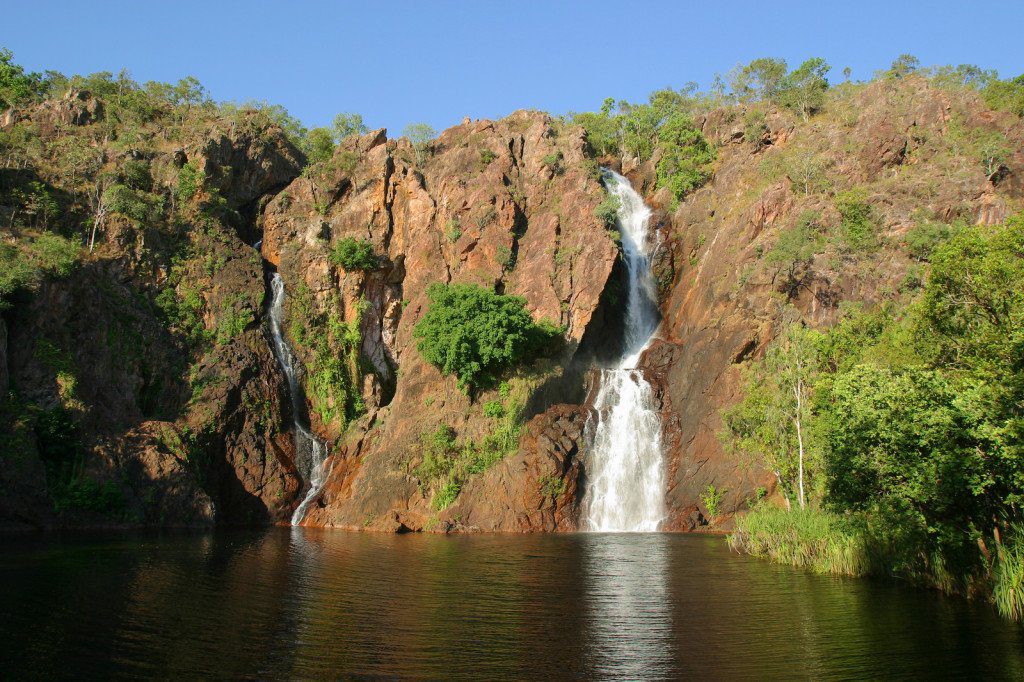
Adelaide River, Northern Territory Australia
Adelaide River is a very small town located 113km (70 mi) south of Darwin which has historic significance from being a major military base during World War II. After the bombing of Darwin the Australian and American military headquarters relocated from Darwin to Adelaide River.
Robin Falls, Northern Territory Australia
A short distance south of Adelaide River on Dorat Rd is Robin Falls, which are located just outside Litchfield National Park. After a short 20-30 minute one way walk you will find the three tiers of Robin Falls.
You can drive further along Dorat Road to eventually connect to Oolloo Road to visit the Tjuwaliyn (Douglas) Hot Springs Park and Douglas River / Daly River Esplanade Conservation Area (detailed below).
Tjuwaliyn (Douglas) Hot Springs Park and Douglas River / Daly River Esplanade Conservation Area, Northern Territory Australia
The Tjuwaliyn (Douglas) Hot Springs Park and the Douglas River / Daly River Esplanade Conservation Area are both located a short distance along the sealed Oolloo Road, which is a turn off from Dorat Road north of the township of Hayes Creek which is 165km (102 mi) south of Darwin.
The final 7km (4 mi) of the turnoff to Tjuwaliyn (Douglas) Hot Springs Park is unsealed but is passable by 2WD vehicles during the Dry season.
A good map of the area is available from the Adelaide River Inn website. More detailed information about the area is available at the Douglas & Daly River Area Overview.
The Tjuwaliyn (Douglas) Hot Springs Park consists of a camping area which adjoins the Douglas River. A section of the park is not accessible by visitors as it is sacred to the local Wagiman people who use the area to conduct women’s ceremonies.
The hot springs emerge at multiple points into the Douglas River and close to the source it is too hot to swim. Approximately 200m (656 ft) up and downstream of the source the hot water mixes with the cooler river waters to make a good temperature for soaking. There can be hot spots in the river so test the water temperature before entering, particularly if you are supervising children.
The Douglas River / Daly River Esplanade Conservation Area is also located a short distance off Oolloo Road. The campsite adjoins the Douglas River and enjoyable walking is available to explore the pools, beaches and cascades. There are also hot springs in the area. Do not swim as there may be crocodiles in the area.
Pine Creek, Northern Territory Australia
Pine Creek is located 225km (139 mi) southeast of Darwin and was the location of the major gold find in 1871 which triggered the growth of Darwin. Mining is still a major industry in the area. Of interest in Pine Creek are the historic buildings, museums and a mine overlook. Pine Creek is also the intersection with the road from Kakadu National Park. A drive from Pine Creek of 213km, 132 mi, 2:45 hrs on a sealed road will take you to the township of Jabiru in the centre of Kakadu National Park.
Umbrawarra Gorge Nature Park, Northern Territory Australia
Umbrawarra Gorge Nature Park is located 29km, 18 mi, 1:05 hrs south of the town of Pine Creek. From the Start Highway turn off the road consists of a 22km (13 mi) stretch of unsealed corrugated road with steep dips and creek crossings. In the Dry season the road is accessible by 2WD vehicles. The best time to visit is in the early to mid dry season when there is still enough water to go swimming.
Umbrawarra Gorge Nature Park contains a camping ground which is close to swimming option in the creek. An easy 1km walk will take you to the Gorge itself, however to go further will require swimming and rock hopping.
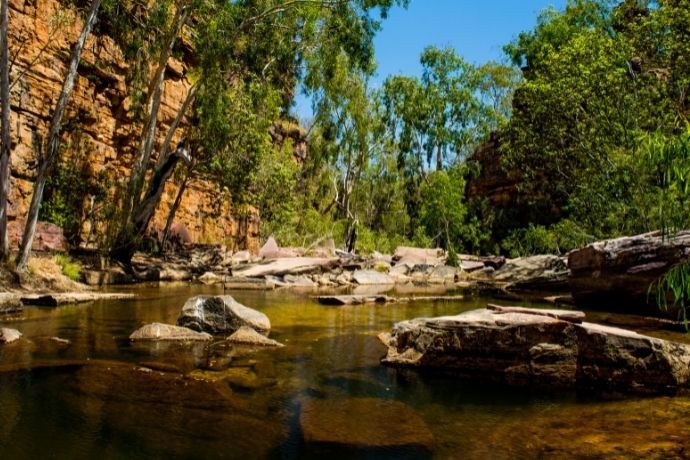
Leliyn (Edith Falls), Nitmiluk National Park, Northern Territory Australia
Nitmiluk National Park has two main accessible areas and the lesser known section is the Leliyn (Edith Falls) section. Leliyn is accessible on sealed road approximately 40km (25 i) north of Katherine (276km/171 mi south of Darwin). After turning off the Stuart Highway there is a further 20km (12 mi) of sealed access road to reach the Leliyn area.
Leliyn has a large camping area and is closely accessible to the beautiful low lying Edith Falls where you can swim most of the year. Do not miss the short 2.6km (1.6 mi) Leliyn Trail which enables you to access the upper pool and additional views of the water falls.
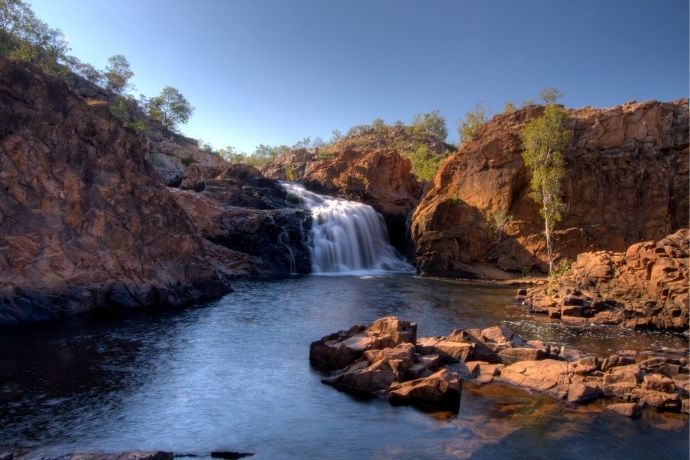
Around Katherine, Northern Territory Australia
Katherine and surrounds is the third largest population centre in the Northern Territory with a population of over 17,000 people. Katherine sits on a major crossroads for the Stuart Highway (Darwin to Adelaide) and the Savannah Way (Cairns to Broome). The Katherine and Surrounds Visitor Guide provides a comprehensive overview of tourist options in the Katherine area.
Nitmiluk (Katherine Gorge) National Park, Northern Territory, Australia
The major attraction in the Katherine area is Nitmiluk (Katherine Gorge) National Park which can be easily accessed by a 30km, 18 mi, 0:37 hrs sealed road to the northeast of Katherine. Katherine Gorge is renowned for being a series of 13 separate gorges which meander across a 12km (7 mi) distance with surrounding 70m (230 ft) high cliffs. Ancient Aboriginal rock art on the cliffs is a notable feature of the park. The May to September Dry season is the best time to visit Nitmiluk National Park. During the wet season the access road can be cut, tour options are limited and swimming is not allowed due to crocodiles moving into the area.
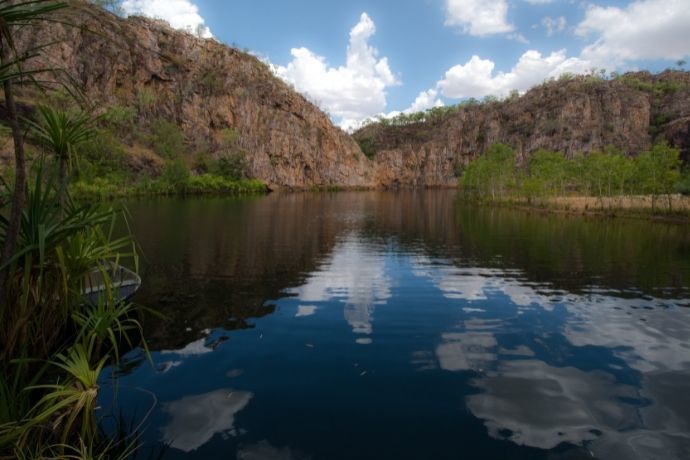
Nitmiluk Tours is the sole tour operator in the park which offers a variety of options including boat cruises, canoeing tours and helicopter tours. You can also rent or bring your own canoe or kayak to explore Katherine Gorge during the Dry season. In addition Katherine Gorge can be accessed via the Baruwei Walks short walks and the multi day hiking trails called the Southern Walks which are both located on the southern side of Katherine Gorge.
The popular 58km (36 mi) Jatbula Trail is a stunning 4 to 7 day walk which traverses north from the Nitmiluk Centre to Edith Falls. The trail is one way and the limited booking slots are strictly controlled.
Other Katherine Attractions, Northern Territory Australia
Katherine Hot Springs are a free attraction on the banks of the Katherine River which is located close to the Katherine town centre.
Other attractions within close access to Katherine are the Cutta Cutta limestone caves which are located 30km (19 mi) south of Katherine. There is a short woodland walk to reach the caves, however cave access is only available by booking a guided tour. The very popular hot Rainbow Springs and Bitter Springs are located in Elsey National Park which is near the township of Mataranka which is 106km (66 mi) south of Katherine.
Northern Territory Trip Tips: When to Visit & Dangers
Weather
The Stuart Highway is vehicle accessible all year round, except in the event of major flooding which is normally associated with a cyclone.
The Northern Territory consists of two main regions. The Top End is the northern section which includes Darwin, Kakadu National Park and Arnhem Land. The Red Centre is central Australia which includes Tennant Creek, Alice Springs and Uluru.
The Top End has a tropical climate. There are two main seasons in the Top End, which consist of the monsoonal wet season (November to April), the dry season (May to October). Also be aware that there is an uncomfortable period which is known locally as ‘The Build Up’ over October to December where the humidity is rising but the monsoonal daily wet season rain has not yet arrived.
Most people prefer to visit the Northern Territory during the dry season, however during the wet season features such as waterfalls, lakes and stream will be at their best.
Maximum temperatures during the wet season typically range from 24C to 38C (75F to 100 F), with January and February being the hottest months. Maximum temperatures during the dry season typically range from 21C to 31C (70F to 88F).
The Red Centre is a semi-arid region which has four seasons. Summer occurs over December to February where maximum temperatures of 20C to 35C occur (68F to 95F). Winter occurs over June to August where maximum temperatures of 3C to 20C occur (37F to 68F), and correspondingly cold nights. Spring and autumn provide the transition between the two extremes.
Cyclones or Hurricanes
The Top End can also be affected by cyclones (or hurricanes or typhoons) between November and April. If travelling during the cyclone season ensure you pay attention to the news so you are aware of any issues.
Stingers (Jellyfish)
From October to May is the lethal stinger season in the Northern Territory when box jellyfish can be found along beaches, in river inlets and offshore. Box jellyfish can inflict lethal stings upon humans. During October to May you should not swim in unprotected or unpatrolled beaches or river mouths.
Crocodiles
The Northern Territory is the home for both freshwater and saltwater crocodiles which can attack and kill humans and animals.
In the Northern Territory you should not swim in rivers, swamps or lakes unless you have been advised by a reputable source that the water is crocodile free (just because you cannot see them does not mean they are not there). Sometimes crocodiles can also be found on beaches and around offshore islands.
Do not assume that there will be signs warning of danger. Both types of crocodile can live hundreds of kilometres inland from the coast. The NT Parks and Wildlife Commission – Be Crocwise website has more information to help you to stay safe.
I have also found an article which aggregates the information about both non-fatal and fatal crocodile attacks in Australia since 2002. Don’t let it be you…
Join the Australia Travel Planning Facebook Group
Check out our Australia Travel Planning Facebook Group – you are welcome to join and it is a great resource to enable you to ask questions about your Australian trip!
Disclaimer: This article contains affiliate links. If you book after clicking on one of these links then we may receive a small commission at no extra cost to you.
Anne Sutherland-Smith is the creative force behind Pretraveller.com, a travel blog that specializes in offering insightful guidance for exploring Japan, South Korea, Australia, Hong Kong, and Singapore. Her passion for these diverse and dynamic regions shines through in her expert advice, particularly in helping travellers stay connected with the latest in SIM cards, pocket WiFi, and eSIMs.
With an unquenchable thirst for Asian and Oceanian cultures, Anne has carved out a niche as a knowledgeable guide for those venturing into the bustling streets of Tokyo, the historical alleys of Kyoto, the vibrant scenes of Seoul, the scenic landscapes of Australia, the vibrant markets of Hong Kong, or the futuristic cityscape of Singapore. Her articles are full of practical tips and detailed information, ensuring travellers are well-equipped for their journeys.
Anne’s approach is grounded in providing reliable, authoritative travel content that enhances the travel experience. From navigating the complexities of digital connectivity on the go to immersing in the local culture, her advice is designed to make travel both enjoyable and seamless.


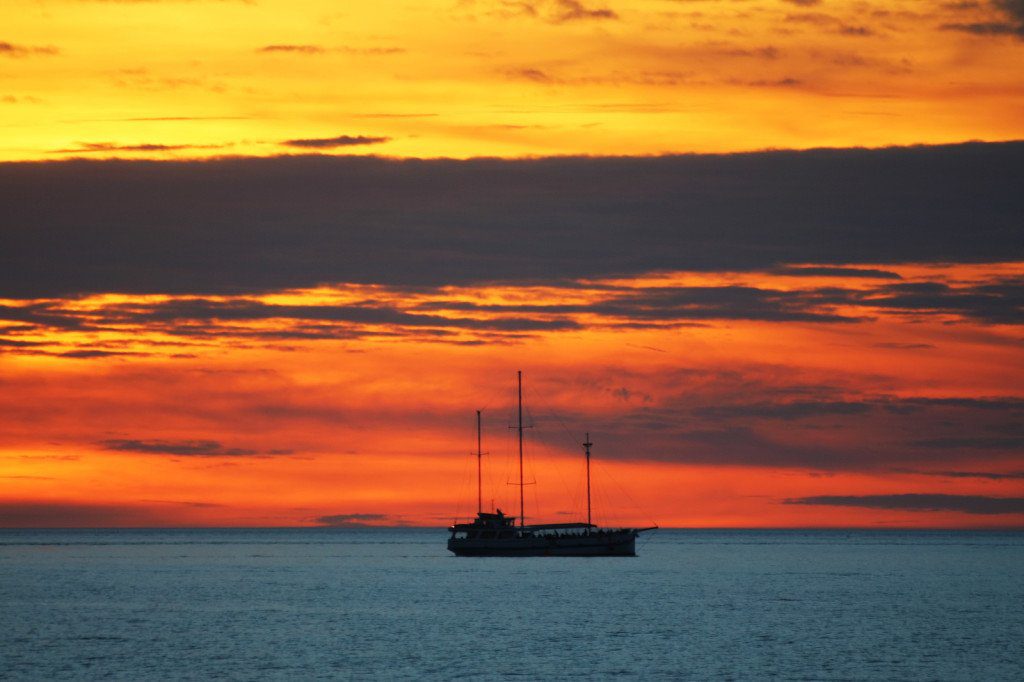
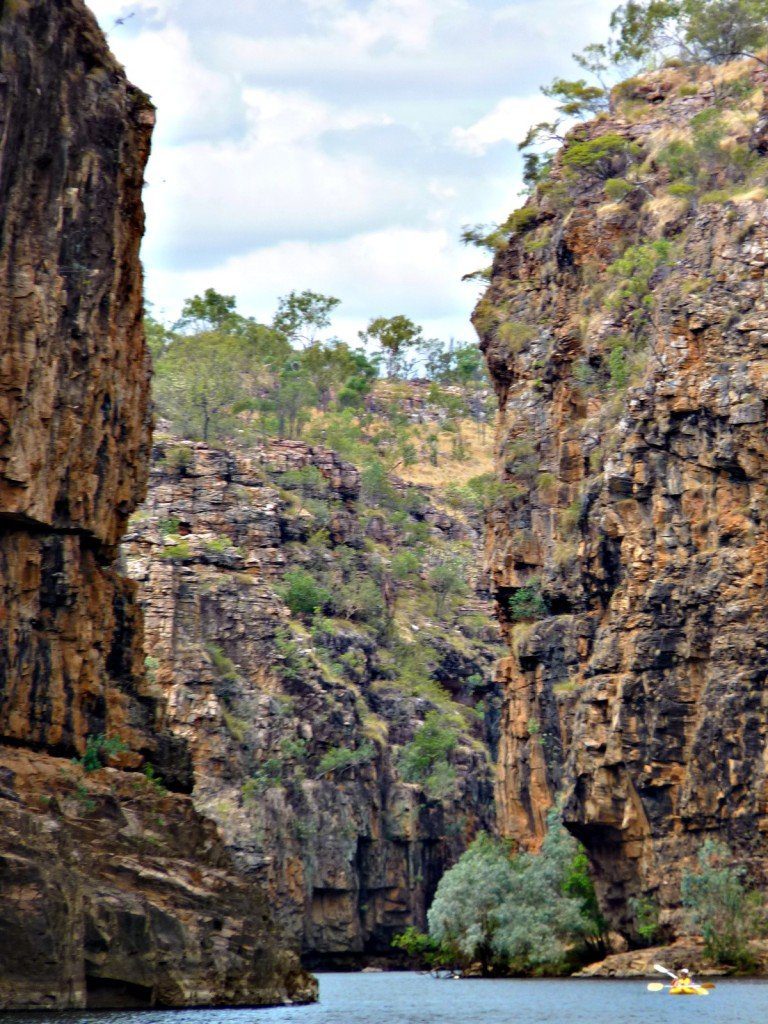

Incredibly informative post!!!
Have never really given Darwin much of a thought until now!
There is not enough time to travel everywhere!!! Oh my gosh!
Sam, I am glad your eyes have been opened to the great option of visiting Darwin. There is so much to see and do around the area that it is definitely a worthwhile trip. I have visited Darwin a couple of times previously but have still not done everything on offer.
Just wait until my article about Alice Springs – I am doing the research now and I am now nagging my husband to visit the Alice Springs and Uluru area – I think we could easily spend two full weeks exploring the area and still not do everything!
Definitely want to go to Alice Springs and Uluru! Australia has some amazing things to see doesnt it! People who dont want to come here are missing a lot!
Gosh – Loads of information there!
I’m looking forward to checking out some of these great recommendations when I visit the Top End later this dry season 🙂
Linda, thanks for your comment. I hope you are looking forward to your trip! And keep an eye out for the next articles in this series – Katherine to Tennant Creek is coming next, followed by Tennant Creek to Alice Springs and Alice Springs to Uluru.